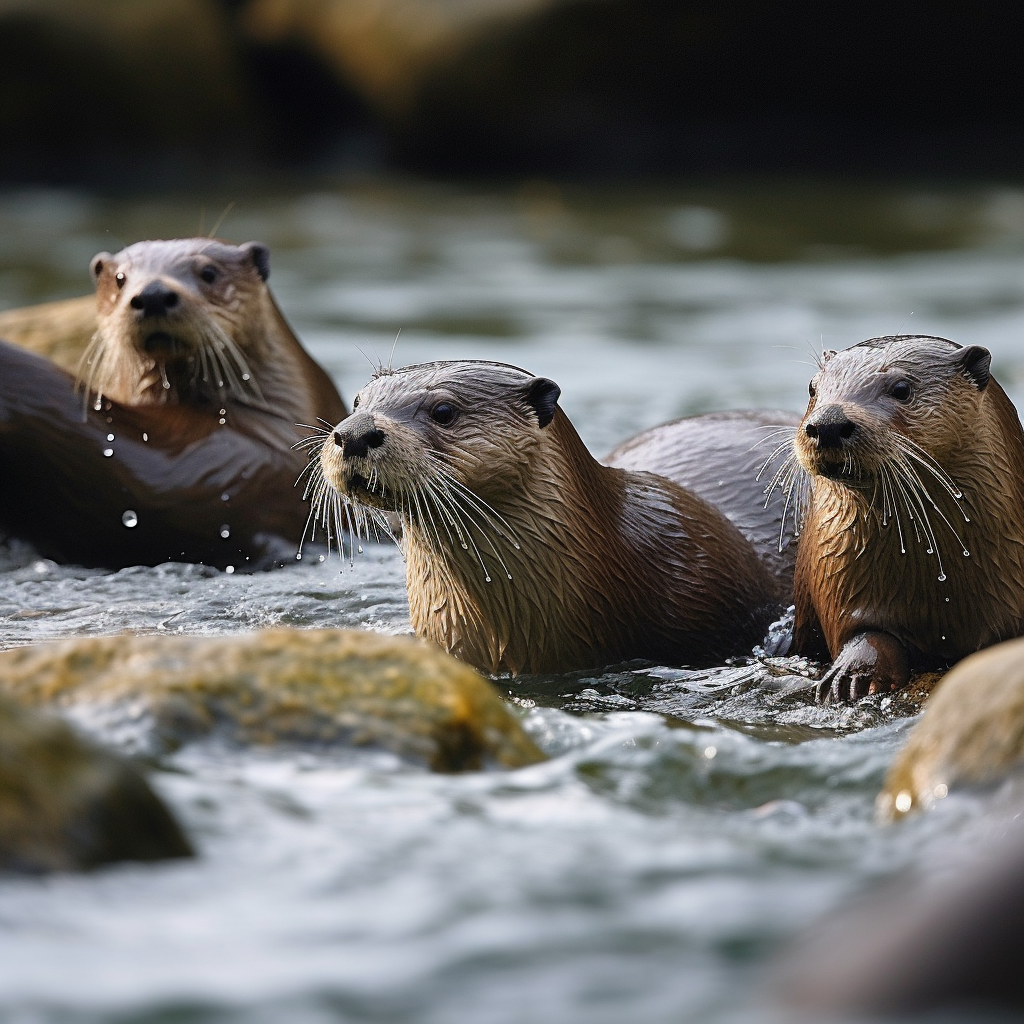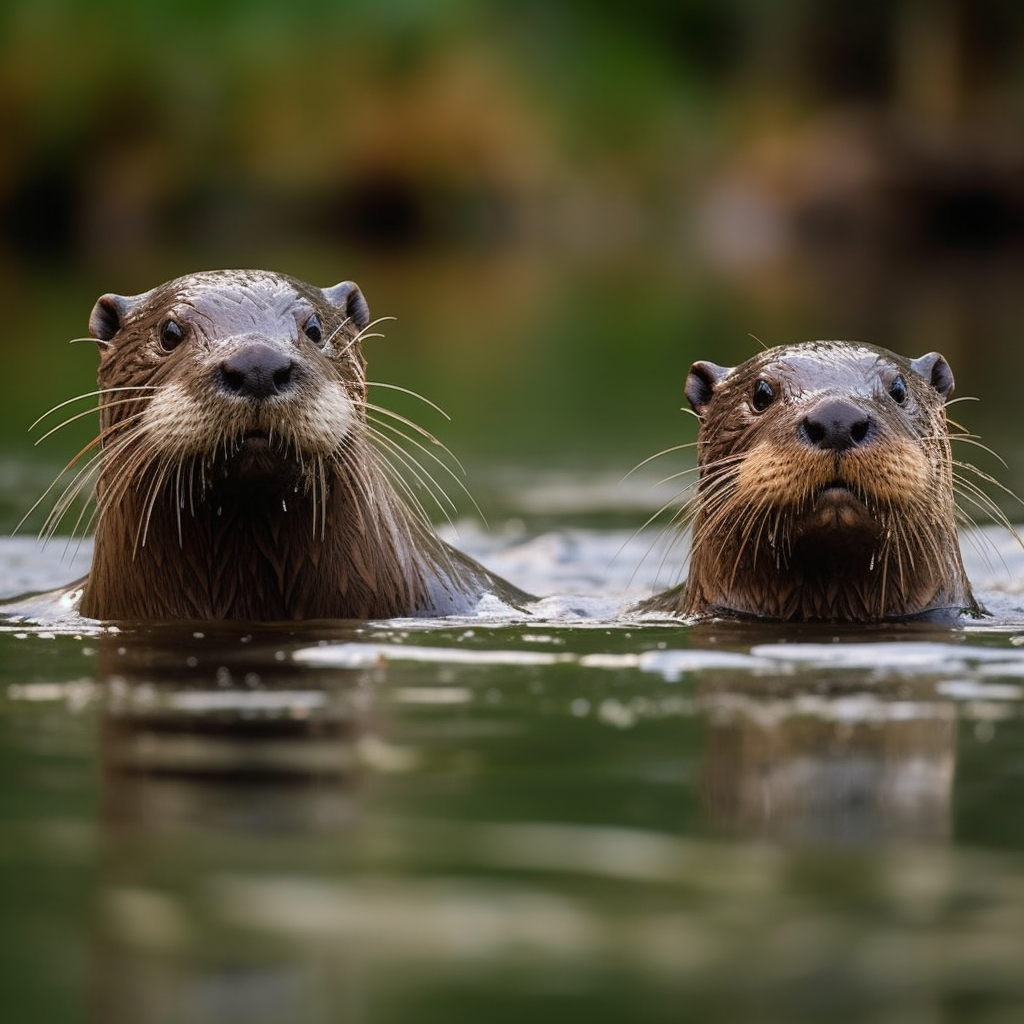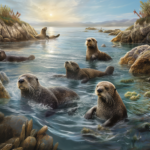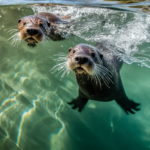Washington state is home to a diverse range of wildlife, including the playful and charismatic river otters. These adorable creatures can be found in various habitats throughout the state, from rivers and lakes to coastal areas. If you’re interested in observing these fascinating animals in their natural environment, you’re in luck! In this article, we’ll explore some of the best places in Washington to see river otters up close and personal. Whether you’re a nature enthusiast, a wildlife photographer, or simply someone who appreciates the beauty of the natural world, these locations offer fantastic opportunities to witness these captivating creatures in action. So grab your binoculars and let’s dive into the wonderful world of river otters in Washington!
Key Takeaways
- Washington state offers several locations where you can see river otters in their natural habitat.
- Some popular spots include Nisqually National Wildlife Refuge, Conboy Lake National Wildlife Refuge, and the Skagit River.
- Look for river otters near water bodies such as rivers, lakes, and wetlands.
- Be patient and observant, as river otters are elusive and may be more active during early morning or late afternoon.
- Remember to maintain a safe distance and avoid disturbing their natural behavior.
Understanding River Otters in Washington State
A. The Habitat and Lifestyle of River Otters
River otters are fascinating creatures that can be found in various habitats throughout Washington State. These playful and charismatic animals are well-adapted to both aquatic and terrestrial environments, making them a delight to observe in the wild.
1. River Otter Habitats
River otters in Washington can be found in a range of habitats, including rivers, lakes, wetlands, and coastal areas. They are highly adaptable and can thrive in both freshwater and saltwater environments. These habitats provide the otters with an abundant food supply and suitable shelter.
2. River Otter Behavior
River otters are known for their playful nature and social behavior. They are often seen sliding down muddy banks, chasing each other, or engaging in water-based activities. These behaviors serve various purposes, including communication, bonding, and honing their hunting skills.
3. River Otter Diet
River otters are opportunistic feeders and have a diverse diet. They primarily feed on fish, such as salmon, trout, and catfish, but also consume amphibians, crustaceans, and small mammals. Their diet varies depending on the availability of prey in their habitat.
B. Conservation Status of River Otters in Washington
The conservation status of river otters in Washington is a topic of concern for wildlife enthusiasts and conservationists. Efforts have been made to protect and preserve their natural habitats to ensure their long-term survival.
1. River Otter Population
The population of river otters in Washington has shown signs of recovery in recent years. Thanks to conservation efforts and habitat restoration projects, their numbers have increased in many areas. However, certain threats, such as pollution and habitat loss, still pose challenges to their overall population.
2. Wildlife Conservation Efforts
Various organizations and agencies in Washington are actively involved in wildlife conservation, including the protection of river otters. These efforts include habitat restoration, monitoring programs, and public education initiatives to raise awareness about the importance of preserving these charismatic creatures and their ecosystems.
3. Otter Watching Tips
If you’re interested in spotting river otters in Washington, there are a few tips to keep in mind. First, choose locations known for otter sightings, such as state parks, wildlife reserves, and river ecosystems. Second, visit during the early morning or late evening when otters are most active. Lastly, be patient and observant, as otters can be elusive and may require some tracking skills to locate.
In conclusion, river otters in Washington State offer a unique opportunity for wildlife enthusiasts to observe these captivating creatures in their natural habitats. By understanding their habitat, behavior, and conservation status, we can appreciate the importance of preserving these animals and the ecosystems they depend on. So grab your binoculars, head out to one of the otter spotting locations, and enjoy the beauty of Washington’s native otters.
Prime Locations to Spot River Otters in Washington State

A. Olympic National Park
One of the prime locations to spot river otters in Washington State is the Olympic National Park. Located on the Olympic Peninsula, this vast and diverse park offers a variety of habitats that are perfect for river otters. The park is home to several rivers, lakes, and coastal areas where these playful creatures can be found.
1. Lake Crescent
Lake Crescent is a popular spot for wildlife viewing in Olympic National Park. The crystal-clear waters of the lake provide an ideal habitat for river otters. Visitors can hike along the shoreline or rent a kayak to explore the lake and increase their chances of spotting these elusive creatures.
2. Hoh Rainforest
The Hoh Rainforest is another area within Olympic National Park where river otters can be found. This lush and green forest is home to numerous rivers and streams, which serve as the perfect hunting grounds for otters. Visitors can take a leisurely stroll along the nature trails and keep an eye out for these playful animals.
B. Nisqually National Wildlife Refuge
Another excellent location to see river otters in Washington State is the Nisqually National Wildlife Refuge. Located near Olympia, this refuge is a haven for a wide variety of wildlife, including river otters. The refuge consists of diverse habitats such as marshes, wetlands, and estuaries, which provide ample food sources for otters.
Visitors to the Nisqually National Wildlife Refuge can explore the various trails and boardwalks that wind through the refuge, offering excellent opportunities for wildlife viewing. Keep an eye out for otters swimming in the water or playing along the shoreline. Binoculars or a camera with a telephoto lens can enhance the experience and allow for better observation and wildlife photography.
C. San Juan Islands
The San Juan Islands in Washington State are another fantastic place to spot river otters. This archipelago, located in the Salish Sea, is known for its stunning natural beauty and abundant wildlife. The islands offer a unique opportunity to observe river otters in their natural habitat.
Visitors can take a wildlife tour or rent a kayak to explore the waters surrounding the San Juan Islands. Keep an eye out for otters swimming, diving, and playing in the kelp forests. These curious creatures are often spotted near shorelines, rocky outcrops, and in protected bays.
In conclusion, Washington State offers several prime locations to spot river otters. Whether you visit Olympic National Park, Nisqually National Wildlife Refuge, or the San Juan Islands, you have a good chance of encountering these fascinating creatures. Remember to respect their natural habitat and observe them from a safe distance. Happy otter spotting!
Comparing Otter Spotting in Washington and Oregon
A. Best Places to See River Otters in Oregon
When it comes to spotting river otters, Oregon offers some fantastic locations. The state is known for its diverse landscapes and abundant wildlife, making it a haven for nature enthusiasts. Here are a few of the best places in Oregon to see river otters in their natural habitat:
-
Crater Lake National Park: This stunning national park is not only famous for its breathtaking lake but also for its thriving otter population. Visitors can catch a glimpse of these playful creatures along the park’s shoreline or even while hiking along the trails.
-
Columbia River Gorge: The Columbia River Gorge is a scenic wonderland that stretches between Oregon and Washington. This majestic area is home to a variety of wildlife, including river otters. Keep an eye out for them near the water’s edge or while exploring the numerous waterfalls in the region.
-
Smith Rock State Park: Located in central Oregon, Smith Rock State Park is known for its towering cliffs and rugged beauty. This park is a popular spot for rock climbing, but it’s also an excellent place to spot river otters. Look for them near the Crooked River, which runs through the park.
-
William L. Finley National Wildlife Refuge: Situated in the Willamette Valley, this wildlife refuge provides a safe haven for a wide range of animals, including river otters. Visitors can explore the refuge‘s trails and observation areas to catch a glimpse of these fascinating creatures.
B. Differences in Otter Habitats between Washington and Oregon
While both Washington and Oregon offer great opportunities for otter spotting, there are some differences in their habitats. These variations can affect the behavior and distribution of river otters in each state.
-
River Ecosystems: Washington and Oregon have different river ecosystems, which can influence where otters are found. Washington has a diverse range of rivers, including the Columbia, Snake, and Skagit rivers, providing ample habitat for otters. In contrast, Oregon’s river systems, such as the Willamette and Deschutes rivers, offer their own unique otter habitats.
-
Population Density: The population density of river otters can vary between Washington and Oregon. Factors such as food availability, water quality, and human impact can influence the size and distribution of otter populations. It’s important to note that river otters are adaptable creatures and can thrive in a variety of habitats.
-
Conservation Efforts: Both Washington and Oregon have implemented conservation efforts to protect river otters and their habitats. These efforts include habitat restoration, monitoring programs, and public education. By supporting these initiatives, visitors can contribute to the long-term conservation of these charismatic animals.
In conclusion, both Washington and Oregon offer excellent opportunities for otter spotting. Whether you choose to explore the scenic landscapes of Oregon or venture into the diverse river systems of Washington, you’re sure to have a memorable wildlife viewing experience. Remember to respect the animals‘ space, observe from a distance, and follow any guidelines or regulations in place to ensure the continued protection of these fascinating creatures.
A Glimpse at Otter Spotting in Hampshire, England

A. Prime Locations for Otter Spotting in Hampshire
Hampshire, England, is home to a diverse range of wildlife, including the elusive and playful river otters. If you’re an otter enthusiast or simply curious about these fascinating creatures, Hampshire offers several prime locations where you can spot them in their natural habitat.
-
New Forest National Park: The New Forest National Park is a haven for wildlife enthusiasts, and otter spotting is no exception. With its extensive river network and diverse ecosystems, the park provides an ideal environment for otters to thrive. Keep an eye out for otters along the Beaulieu River, Lymington River, and other waterways within the park.
-
Itchen Valley Country Park: Situated near Winchester, Itchen Valley Country Park is another fantastic spot for otter spotting. The park boasts a tranquil river that meanders through picturesque meadows and woodlands, offering a perfect setting for observing these charismatic creatures. Take a leisurely stroll along the riverbanks and keep your eyes peeled for signs of otter activity.
-
Hurst Castle Spit: Located at the western end of the Solent, Hurst Castle Spit is a unique spot where the sea meets the river. This dynamic environment attracts a variety of wildlife, including otters. Visit during low tide and explore the rocky shores and tidal pools, where otters often search for food. Remember to maintain a respectful distance and observe these creatures from afar to avoid causing any disturbance.
B. Comparing Otter Habitats: Washington vs Hampshire
While Hampshire offers excellent opportunities for otter spotting, it’s interesting to compare the otter habitats in Washington state, USA, with those in Hampshire, England. Both regions have their own unique characteristics that contribute to the presence of river otters.
Washington State, USA:
-
Abundant River Systems: Washington is known for its vast network of rivers and waterways, providing ample habitat for river otters. From the Columbia River to the Skagit River, these water bodies offer rich ecosystems where otters can thrive.
-
Diverse Landscapes: Washington’s diverse landscapes, ranging from rugged coastlines to dense forests, create a variety of otter habitats. Otters can be found in coastal areas, estuaries, lakes, and even urban environments, adapting to different ecosystems throughout the state.
Hampshire, England:
-
Historical Waterways: Hampshire is home to historic waterways, such as the Beaulieu River and the Itchen River, which have supported otter populations for centuries. These rivers provide essential resources for otters, including food and shelter.
-
Protected Nature Reserves: Hampshire boasts several nature reserves that prioritize wildlife conservation. These protected areas, such as the New Forest National Park and Itchen Valley Country Park, offer undisturbed habitats for otters to thrive.
While the habitats in Washington and Hampshire may differ, both regions provide suitable environments for otters to live and flourish. Whether you’re in the Pacific Northwest or exploring the English countryside, keep your eyes open for these charismatic creatures and enjoy the thrill of otter spotting in their natural habitats.
Tips for Spotting River Otters Near You

A. Best Time to Spot River Otters
River otters are fascinating creatures that can be found in various habitats throughout Washington. If you’re hoping to catch a glimpse of these playful and elusive animals, timing is key. While river otters can be seen year-round, there are certain times when your chances of spotting them are higher.
-
Early Morning and Late Afternoon: River otters are most active during the early morning and late afternoon hours. This is when they are often seen hunting for food or playing in the water. Plan your visit to otter habitats during these times for the best chance of observing their natural behavior.
-
Spring and Summer Months: River otters are more active during the spring and summer months when the weather is warmer. During this time, they are busy raising their young and exploring their surroundings. Consider visiting otter habitats between April and September for optimal viewing opportunities.
-
Avoid Harsh Weather Conditions: River otters tend to be less active during heavy rain or extreme weather conditions. If the weather is unfavorable, it’s best to postpone your otter-spotting adventure. Wait for a clear, calm day to increase your chances of seeing these charismatic creatures.
B. Responsible Wildlife Viewing Practices
When observing river otters in their natural habitat, it’s important to practice responsible wildlife viewing. By following these guidelines, you can ensure the safety of both the otters and yourself, while minimizing any disturbance to their environment.
-
Keep a Safe Distance: Maintain a respectful distance from river otters to avoid causing stress or altering their behavior. Use binoculars or a zoom lens for a closer look without intruding on their space. Remember, it’s their home, and we are just visitors.
-
Stay Quiet and Still: River otters have excellent hearing and can be easily startled by loud noises or sudden movements. Keep your voice down and move slowly and quietly to avoid scaring them away. Patience is key when observing wildlife.
-
Observe from a Distance: Avoid approaching river otters directly or attempting to touch them. It’s essential to respect their wild nature and allow them to go about their daily activities undisturbed. Enjoy the beauty of their natural behavior from afar.
-
Leave No Trace: When visiting river otter habitats, be sure to leave no trace behind. Dispose of any trash properly and avoid leaving food or other items that could attract unwanted attention from other wildlife. Help preserve their pristine environment for future generations.
By following these tips, you can enhance your chances of spotting river otters in Washington while promoting their well-being and conservation. Remember, observing these incredible creatures in their natural habitat is a privilege, so let’s do our part to protect them and their environment.
Conclusion
In conclusion, Washington state offers several fantastic opportunities to observe river otters in their natural habitat. From the coastal regions to the inland waterways, these playful and charismatic creatures can be found in various locations throughout the state. Whether you choose to visit a wildlife refuge, a national park, or a nature center, you are sure to have an unforgettable experience watching these agile swimmers and curious explorers. Remember to bring your binoculars, camera, and a sense of adventure as you embark on your otter-spotting journey. So, pack your bags, head out into the great outdoors, and get ready to witness the delightful antics of river otters in Washington.
Frequently Asked Questions
Are there otters in Washington State?
Yes, river otters are native to Washington State. They are a common sight in the state’s rivers, lakes, and coastal areas. They are part of the rich wildlife that Washington boasts.
Where can I see river otters in Washington?
River otters can be seen in various locations across Washington. Some popular spots include the Nisqually Wildlife Refuge, Deception Pass State Park, and the shores of the Puget Sound. These areas offer excellent opportunities for wildlife viewing and photography.
What is the best time to see river otters in Washington?
River otters are most active during dawn and dusk. However, they can be spotted throughout the day. Winter is a particularly good time as otters are less likely to be disturbed by human activity.
Where can I see river otters near me?
River otters can be found in a variety of habitats across the Pacific Northwest. Check local wildlife reserves, state parks, and river ecosystems for potential otter spotting locations. Always remember to respect the animals and their habitats.
Can I see river otters in Oregon?
Yes, river otters are also native to Oregon. They can be found in many of the same types of habitats as in Washington, including rivers, lakes, and coastal areas.
How can I track otters in the Pacific Northwest?
Tracking otters involves looking for signs such as tracks, slides, and spraints (otter droppings). Joining a local nature tour or hiring a wildlife guide can enhance your otter tracking experience.
What is the river otter population in Washington?
The exact number of river otters in Washington is unknown, but the population is believed to be healthy and stable. River otters are not currently listed as endangered or threatened in Washington.
What kind of behavior can I expect from river otters?
River otters are playful and social animals. They can often be seen sliding on their bellies, wrestling, and chasing each other. However, they are also skilled hunters who can swim at high speeds to catch fish and other prey.
Where can I see otters in Hampshire?
While this FAQ primarily focuses on Washington State, otters can indeed be seen in Hampshire, England. The New Forest Wildlife Park is a popular location for otter spotting.
How does Washington support wildlife conservation?
Washington State has numerous wildlife reserves and state parks that protect a variety of habitats and species. These areas, along with conservation programs and regulations, help to preserve the state’s diverse wildlife, including river otters.




